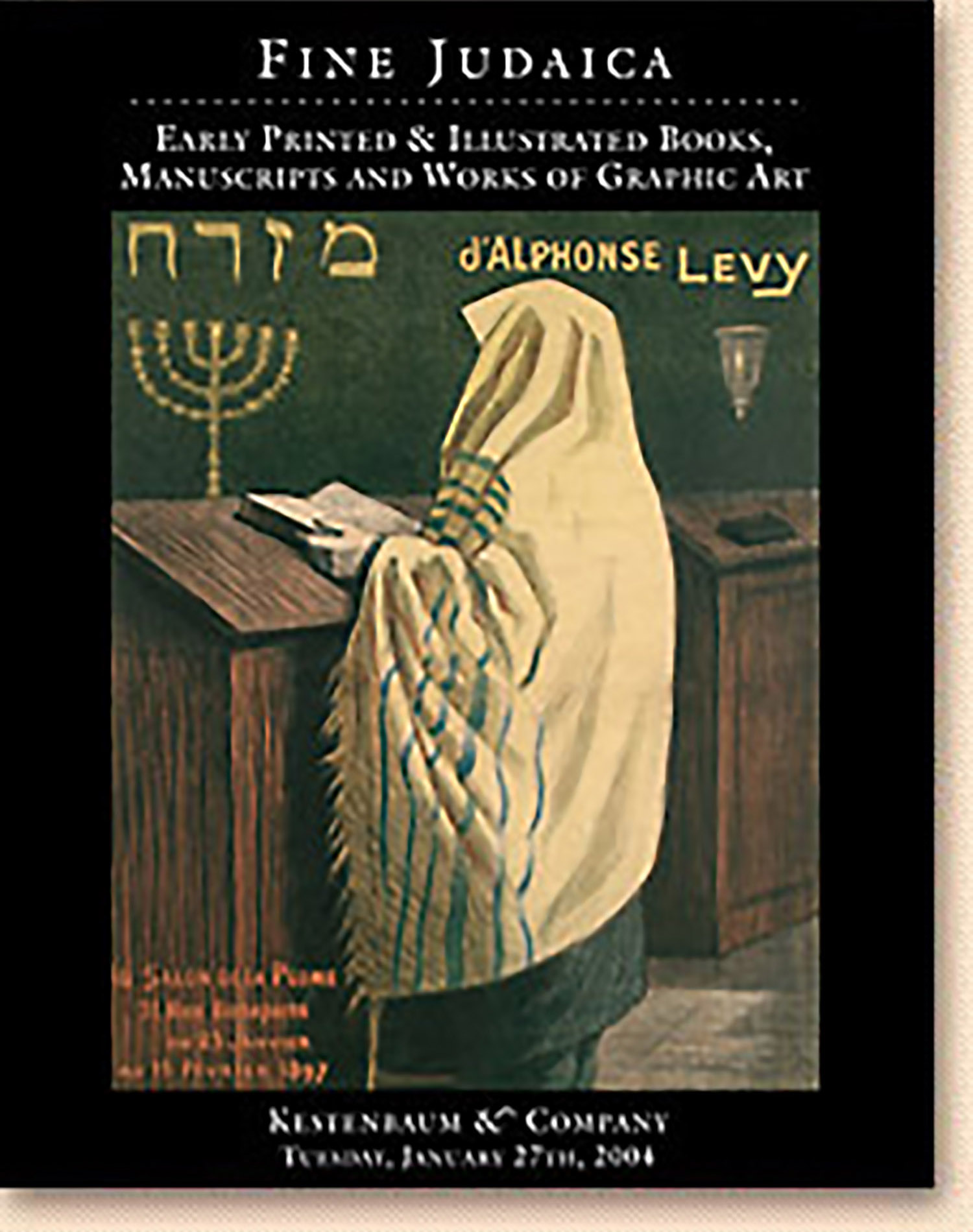Royal Decree concerning abandoned Jewish properties in Tudela, province of Navarra.

AUCTION 22 |
Tuesday, January 27th,
2004 at 1:00
Fine Judaica: Printed Books, Manuscripts and Works of Graphic Art Including Holy Land Maps, Illustrated Books, Photography and Graphic Art from The Collection of Daniel M. Friedenberg of Greenwich, Conn
Lot 237
(SPAIN)
Royal Decree concerning abandoned Jewish properties in Tudela, province of Navarra.
Valladolid, Spain: June 1513
Est: $3,000 - $4,000
PRICE REALIZED $3,250
The edict of expulsion came to the kingdom of Navarre in northern Spain in1498, six years later than the rest of the country. The present document signed by King Ferdinand V of Aragon and Navarre addresses the legal status of the synagogues of the departed Jews. Tudela was included within the jurisdiction of the Inquisition tribunal of the kingdom of Navarre which was set up in 1512. The town of Tudela figures prominently in Spanish Jewish history as the birthplace of Judah Halevi and Abraham ibn Ezra, and of course the famous traveller Benjamin of Tudela. See EJ XV, cols.1423-6.
THIS SHOULD HAVE BEEN ADDED BUT WAS’NT (SAVED FOR FUTURE REF)
Report on Edict Signed by Fernando, King of Aragon, Dated June 1513 by Rabbi Arie Cymet.
I - NAVARRA.
In order to understand the Edict, it is necessary to know the basic history of Navarra. Navarra was an independent kingdom governed by the royal family, Foix, until 1498, when Aragon, led by King Fernando, conquered it. By 1513, the year the edict was signed, Navarra was already under the jurisdiction of King Fernando and Queen Isabella. The expulsion of the Jews from Navarra did not occur until 1498 unlike from the rest of Spain where the expulsions took place in 1492. What's more, in 1492, Navarra allowed in a small portion of the Jews who were expelled from the kingdoms of King Fernando and Queen Isabella. (source: Yehudai Navarra, Yom Tov Asis)
II - JUROS.
After the expulsion of Jews from Spain, the synagogues and communal buildings were either turned into churches or used to pay the Juros. The Juros were counts and noblemen who lent money to the court. Until 1492, the Juros were reimbursed with revenues from taxes levied on the Jews for usage of their synagogues, batei din, yeshivot, kosher meat and wine, and other communal services. Once the expulsion took place, that source of money dissolved; the court was left without income to pay the Juros. In place of this money, the Juros were given the right to rent some of these properties either for a certain period of time or for life. Haim Beinart, in his book, The Expulsion of the Jews from Spain, on page 62, notes that not only Juros were repaid in this manner but also some officers of the court were rewarded in this way for their faithful services.
III _ EDICT.
This Edict from King Fernando pertains to the revenues of the synagogues and communal buildings of Tudela and its surroundings. These buildings, which once belonged to the Jews and became the possessions of the King, were all transferred to Alonso Sains De Verrojpe (or Verrospe) for as long as he lived. The King requested that the governors, mayors, officeholders, and nobles abide by this edict and not oppose it. The edict was signed by the secretary of the king and by the king himself. (The signature is clearly the same as the signature on the edict for the expulsion _ for a facsimile of this signature, see page 48 of Haim BeinartÅfs The Expulsion of the Jews from Spain.)
